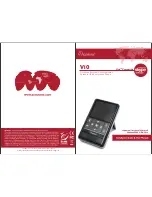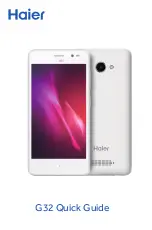
Managing Files Using a Computer
Use a USB cable connection between a Windows
®
computer and your device to transfer
and manage your files.
Once the two devices are connected, you can choose if you want to charge your device,
transfer files, or use it for MIDI input. Your computer will detect your device when you
select the
Transfer files
connection mode. The default connection mode is set to
Charge this device
.
With Xperia™ Companion you can access the file system of your device. If you do not
have Xperia™ Companion installed, you are requested to install it when you connect your
device to the computer.
Always use a USB cable intended for your specific Xperia™ model and make sure it is
completely dry.
USB Connection Mode
You can use the
Transfer files
connection mode for managing files and updating device
software. This USB mode is used with Microsoft
®
Windows
®
computers. Charging is
enabled by default.
Using the
Use device as MIDI
mode, your device can function as a MIDI input for
musical instrument apps.
To Change USB Connection Mode
1
Attach a USB connector to your device.
2
Drag down the Status bar, and then tap
Charge this device
.
3
Tap either
Transfer files
or
Use device as MIDI
as desired.
Storage and Memory
Your device has several different storage and memory options.
•
The
internal storage
is about
32
GB and is used to store downloaded or transferred content along with
personal settings and data. Some examples of data saved to internal storage are alarm,
volume, and language settings; emails; bookmarks; calendar events; photos; videos and
music.
•
You can use a removable
memory card
with a storage capacity of up to
128
GB to get more storage space. Media files and
some apps, along with their associated data, can be moved to this type of memory to
free up internal storage. Some apps, for example, the Camera app, can save data
directly to a memory card.
•
The
dynamic memory (RAM)
is about
2
GB and cannot be used for storage. RAM is used to handle running
applications and the operating system.
You may have to purchase a memory card separately.
Read more about the use of memory in Android devices by downloading the White paper for
your device at
www.sonymobile.com/support/
.
Improving Memory Performance
Your device memory tends to fill up as a result of normal usage. If the device starts to
slow down, or applications suddenly shut down, you should consider the following:
•
Always try to keep at least
500
MB of free internal storage available.
•
Close running applications that you are not using.
•
Clear the cache memory for all applications.
•
Uninstall downloaded applications that you don't use.
35
This is an internet version of this publication. © Print only for private use.
















































